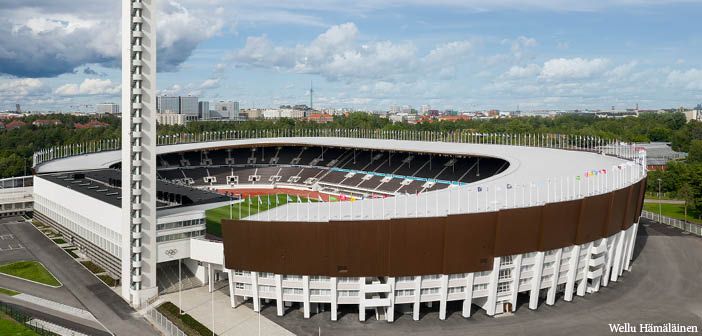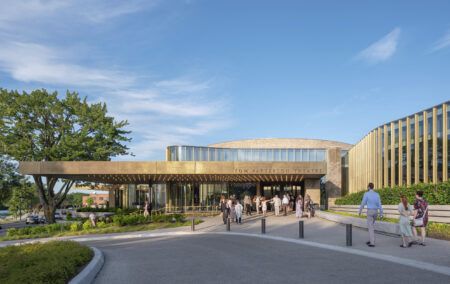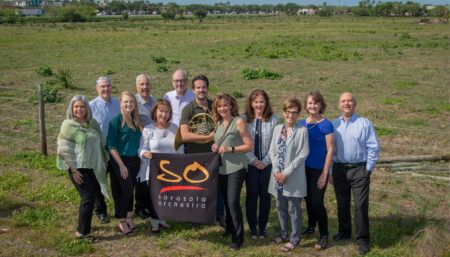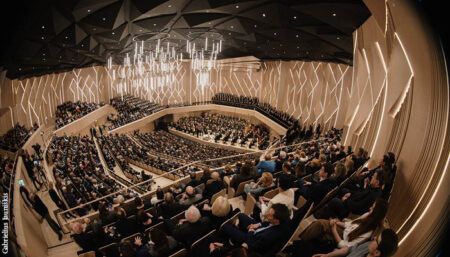The Helsinki Olympic Stadium in Finland has reopened following a four-year renovation that added new functionalities, as well as comfort and safety features, while respecting the original 1930s modernist architecture.
The stadium was first inaugurated in 1938, and by the early 2000s its future looked uncertain. The arena was in poor condition and no longer met the standards expected for an events venue. Although the cost estimate was equal to building a new arena, the city decided to invest in rebuilding and refurbishing the stadium.

Perhaps this can be attributed to the venue’s status as a building of national relevance, a symbol of the dawn of a new era for a nation that declared independence only 20 years prior to the stadium’s inauguration in 1938. At the time, Finland was preparing to host the Olympics in 1940. Postponed because of the Second World War, the Olympics were ultimately held in 1952. The arena’s original architects were Finns Yrjö Lindegren and Toivo Jäntti.
While the stadium has been renovated with great respect towards the original architecture, it has also undergone great changes to meet 21st-century standards. The entire stadium premises – as well as the stands, pitch and tracks – have been modernised. Moreover, a new 20,000m² (215,278ft²) underground area doubles the amount of warm indoor space. Versatile sports facilities, a tunnel following the tracks above, a logistics area and a multipurpose hall constitute a completely new part of the venue.
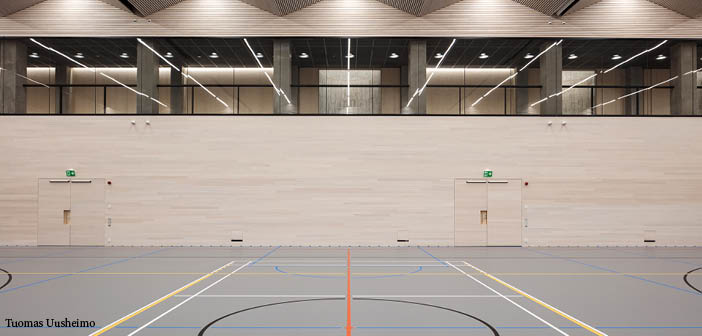
The external architecture of 2020 combines the restored 1930s concrete architecture and the renovated parts of the 1950s with a new North stadium square, where food and beverage kiosks in concrete serve audiences. The materials in old and new parts are “timeless and durable”: white concrete, brick, wood and glass.
The renewed façade cover, made of Finnish spruce and pine timber, conceals new rain shelter structures above the stands. The use of wood harks back to the 1950s, when it was used to extend the concrete-structured stadium to reach its current appearance. To ensure audience safety, the rain shelter cover was implemented in fireproofed wood. The composition of the 36,300 new wood-composite seats, made nearby in Salo, Southern Finland, is also fire-resistant. The seats are designed to be more comfortable even for taller event-goers. The stadium can host up to 50,000 guests for concerts.
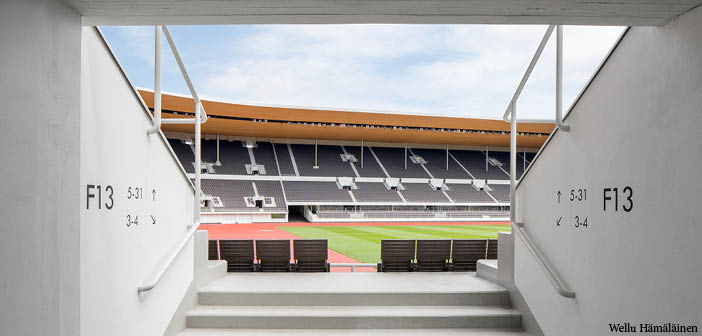
The plastered façades, their visible concrete structures and the brickwork in the curves have been restored to their original look. The new entrances to the stands, with the concrete stairs poured in place, have been adapted to go with the concrete structure curves and brickwork façades. With new emergency exits, the stadium can now be emptied in eight minutes.
The details in the façade’s steel parts have been restored and the steel metal flashing has been made according to the original drawings. The original frames and sashes of the steel and wooden windows have been restored, while the glass sheets are new and more energy-efficient.
 The architectural design was completed by the consortium K2S and NRT in cooperation with Swedish architecture collective White Arkitekten and Wessel de Jonge from the Netherlands. “The Olympic Stadium was built for action, and it has a wide range of different user groups,” said architect Kimmo Lintula of K2S. “The stadium offers a frame for all this action. As architects, we had to listen to representatives of all the different user groups, learn about their needs, and fit them together in a way that allows the stadium to serve all users with as little change as possible – all the while maintaining an architecturally harmonious, experiential stadium.”
The architectural design was completed by the consortium K2S and NRT in cooperation with Swedish architecture collective White Arkitekten and Wessel de Jonge from the Netherlands. “The Olympic Stadium was built for action, and it has a wide range of different user groups,” said architect Kimmo Lintula of K2S. “The stadium offers a frame for all this action. As architects, we had to listen to representatives of all the different user groups, learn about their needs, and fit them together in a way that allows the stadium to serve all users with as little change as possible – all the while maintaining an architecturally harmonious, experiential stadium.”
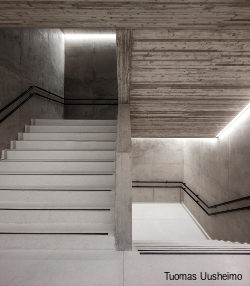 The facilities in the 1930s part of the stadium now serve as multipurpose space for events. Many improvements have been made to maximise audience comfort and accessibility. For example, the number of restrooms was increased from 248 to 600, and there are now many sales stands. The 72m (236ft) stadium tower, untouched by the renovation, offers views over the city.
The facilities in the 1930s part of the stadium now serve as multipurpose space for events. Many improvements have been made to maximise audience comfort and accessibility. For example, the number of restrooms was increased from 248 to 600, and there are now many sales stands. The 72m (236ft) stadium tower, untouched by the renovation, offers views over the city.
The Olympic Stadium will celebrate its opening weeks in September 2020. It is expected to attract about a million visitors every year. “The Olympic Stadium welcomes a new era with open arms,” said Marju Paju, marketing and communication director for the Stadium Foundation. “Sports and music fans alike from all over the world will meet at events held here, and the facilities will also draw locals and visitors on a daily basis. The renewed Olympic Stadium will be grander than ever, a venue for unforgettable moments and powerful emotions.”


